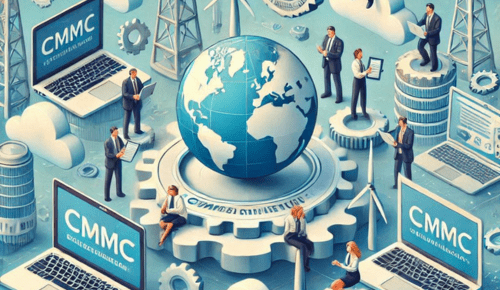Every organization’s path to CMMC certification is different. While the framework is structured, real-world scenarios reveal unexpected challenges and creative solutions. From small contractors to large-scale suppliers, the journey often uncovers valuable lessons about resource management, compliance strategies, and the importance of preparation.
Scenario One: a Small Contractor Struggling with Resource Allocation for Certification
Small contractors often face the dual challenge of meeting CMMC requirements while managing tight budgets and limited staff. The process can feel overwhelming when resources are already stretched thin, yet compliance remains non-negotiable for securing contracts.
In one real-world case, a small contractor discovered that focusing on incremental progress was key. By breaking the certification process into manageable phases, they prioritized essential controls outlined in the CMMC assessment guide. This allowed them to allocate resources strategically without compromising day-to-day operations. Engaging a CMMC consultant also helped them streamline their approach, ensuring no effort was wasted on non-essential tasks. This phased strategy provided a clear path forward, avoiding burnout while staying on track.
Additionally, the contractor learned that early investment in tools to automate documentation and security processes saved significant time. While initial costs seemed daunting, this investment paid off by reducing the manual workload, allowing staff to focus on critical compliance needs rather than repetitive tasks.
Scenario Two: a Manufacturing Firm Enhancing Data Security to Meet Compliance
For manufacturing firms, data security is often a secondary concern until compliance mandates like CMMC make it a priority. One manufacturer found their existing security practices insufficient for safeguarding Controlled Unclassified Information (CUI), a key requirement under CMMC.
Their first step was conducting a thorough gap analysis using the CMMC assessment guide. This exercise highlighted areas where their infrastructure fell short, including weak access controls and outdated encryption protocols. Addressing these issues required not only upgrading their technology stack but also training their team on cybersecurity best practices. The result was a dual benefit: stronger security measures and a workforce that understood their role in maintaining compliance.
The firm also implemented multi-factor authentication (MFA) across its systems, a move that provided immediate gains in meeting CMMC requirements. Although MFA required operational adjustments, it was well worth the effort for the enhanced security and compliance readiness it offered.
Scenario Three: a Technology Company Implementing Automation for Efficiency
Technology companies often possess the expertise to tackle CMMC requirements but may struggle with the administrative burden of documenting compliance. One company discovered that even with strong technical capabilities, the sheer volume of paperwork could slow their progress.
To overcome this, they turned to automation tools that simplified documentation and tracked progress throughout their CMMC assessments. Automated systems allowed them to create templates, schedule regular compliance checks, and centralize their records for easier access during audits. This efficiency not only saved time but also reduced errors that could lead to setbacks.
They also integrated automated alerts to flag lapses in control implementation. By adopting a proactive approach, the company ensured they were always ahead of potential issues. Leveraging these tools freed up their team to focus on refining their security controls rather than being bogged down by administrative tasks.
Scenario Four: a Logistics Provider Addressing Gaps Found During a Pre-assessment
Pre-assessments are an invaluable tool for identifying weak points before undergoing the official CMMC evaluation. For one logistics provider, a pre-assessment revealed several overlooked gaps, particularly in third-party risk management and employee training.
The company realized they had to tighten their vendor vetting process to ensure all third-party partners adhered to CMMC standards. Using guidance from a CMMC consultant, they developed a standardized checklist for evaluating vendor compliance, ensuring alignment across the board. This step not only filled a critical gap but also reinforced trust throughout their supply chain.
Employee training became another focal point. By implementing regular cybersecurity awareness sessions, the logistics provider empowered their team to recognize and mitigate potential threats. This proactive education created a culture of compliance that extended beyond meeting CMMC requirements—it became an integral part of their daily operations.
Scenario Five: a Consulting Agency Developing Tailored Compliance Frameworks
For consulting agencies, achieving CMMC certification can be as much about setting an example as it is about fulfilling contractual obligations. One agency took a highly strategic approach by developing a tailored compliance framework to guide their efforts and those of their clients.
Starting with the CMMC assessment guide, the agency mapped out requirements to align with their unique operations. This personalized roadmap not only streamlined their certification process but also served as a template they could adapt for their clients. The dual-purpose framework helped position the agency as a trusted partner for organizations navigating CMMC compliance.
They also leaned heavily on collaboration, creating cross-functional teams to address specific aspects of the framework. By involving representatives from IT, HR, and operations, the agency ensured their approach was comprehensive and addressed every potential gap.

